Search Results for Tag: USA
Trudeau and Obama’s Arctic Endeavours
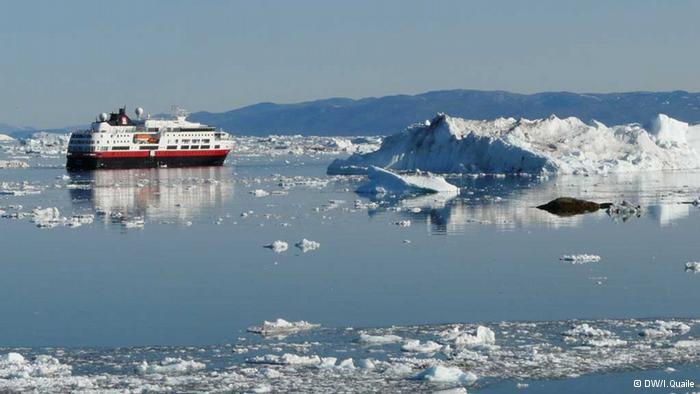
Obama and Trudeau want to protect the Arctic against climate change and harmful development (Pic: I.Quaile
Sometimes there are pleasant surprises to end the week. An announcement by the US and Canadian leaders that they are joining forces to take measures to protect the Arctic would come into that category.
Given the US role as a top emitter and Canada’s extremely negative position on climate action under the old Harper government, this seems to me a very important announcement. Obama, unfortunately, is on his way out. Trudeau, we know, has just come in.
I was interviewing Frida Bengtsson from Greenpeace on the phone this morning about a campaign to keep industrial fishing out of the Arctic. I asked her how she judged the announcement. This was her response:
“I think it shows some good, clear leadership on Arctic protection. Now it’s up to the implementation. We’re hoping they will set the bar really high on protection and that fishing will be included and that areas of the Arctic will be off limits to any industrial activity, including oil and gas.”
As always, the proof of the pudding is in the eating.
In the background, the two countries have pledged to sign the Paris climate deal “as soon as feasible”. Hm. That sounds a little wishy-washy to me. But they also say they want to improve cooperation on energy issues. If it means cutting emissions rather than building something like the Keystone XL crude oil pipeline to bring heavy Canadian oil to the US, it’s extremely good news for the climate. Obama rejected the project last year. It was promoted by Trudeau’s predecessor, Stephen Harper.
Canada and the USA have now committed to cut emissions of methane by 40 to 50 percent below 2012 levels by 2025. Given that methane is around 20 times more powerful than CO2 as a greenhouse gas, that is an important step. The oil and gas industry is the single largest source of methane emissions in the US and globally. Obama and Trudeau also announced they plan steps to fight climate change in the Arctic, and to speed development of green technologies.
The US Environmental Protection Agency, EPA is to start developing regulations for methane emissions from existing oil and gas sources immediately and “move as expeditiously as possible to complete this process”. Obama has made extensive use of the EPA during his time in office, in his attempt to combat opposition to his pro-environment and climate moves from Republicans.
Last month the US Supreme Court ruled to delay the implementation of Obama’s Clean Power Plan to fight emissions from power plants. But the President says the plan to cut methane emissions is on secure legal grounds.
In the Arctic, the countries agreed to set standards on shipping, fishing and oil and gas exploration and development, and to base decisions on scientific evidence. Development is only to occur “when the highest safety and environmental standards are met”.
In the Washington Post, mark Brownstein, vice president of climate and energy at the Environmental Defense Fund, said the proposed cut in methane emissions would be like “closing a third of the world’s coal plants”.
“This is arguably the single biggest, most impactful, most immediate thing we can do to slow the rate of warming right now”, Brownstein said.
Obama and Trudeau pledged to safeguard the Arctic with initiatives to protect more than 10 percent of the marine areas, designate shipping corridors with low environmental impact, and establish new offshore oil and gas leasing plans.
Clearly, both governments are recognizing the Arctic as a priority. Of course full Arctic protection requires action by other Arctic nations, like Russia, Denmark and Norway.
Increasing industrial activity in the Arctic brings an increased risk of potential collisions, oil spills, pollution, black carbon and underwater noise to disturb wildlife.
This joint announcement is a clear demonstration of how much political leadership can do when it comes to climate issues,and just how important is to have people in power who understand what drives climate change and why it is dangerous, and are willing to commit to climate action in the face of opposition from fossil-fuel-based industries, demonstrating at the same time that climate protection is actually good for the economy.
I interviewed Alexander Ochs, Senior Director for Climate and Energy at the Worldwatch Institute recently about implementing the Paris Agreement and the “Energiewende”, the transition to renewable energy. We also discussed the US position on climate.
“If we talk about the US, there is not one US player. Unlike many other countries where there is a consensus across parties, across people of different ideologies, that does not exist in the US, it’s a highly partisan issue. Candidates for presidency and US congress take positions almost exactly along party lines.”
Clearly, the result of the US presidential election will have major implications for climate action.
“The results of the elections on the federal level, as well as their impact on international cooperation on climate and energy, will be very dramatic. Having said that, even under Republican leadership, – which would have dramatic impacts – there will be many actors in the United States that will continue their action on the ground. Whether it’s municipalities or cities –more than a thousand mayors are supporting the Kyoto goals for example, widely unnoticed by Europeans – or on the state level, or individuals. So you do see a lot of things happening on the ground in the United States, so it’s often unfair to these people if we reduce the US to the presidency.”
That is an encouraging thought. Leadership is essential. But so, too, is action from the bottom up.
Record permafrost erosion in Alaska bodes ill for Arctic infrastructure
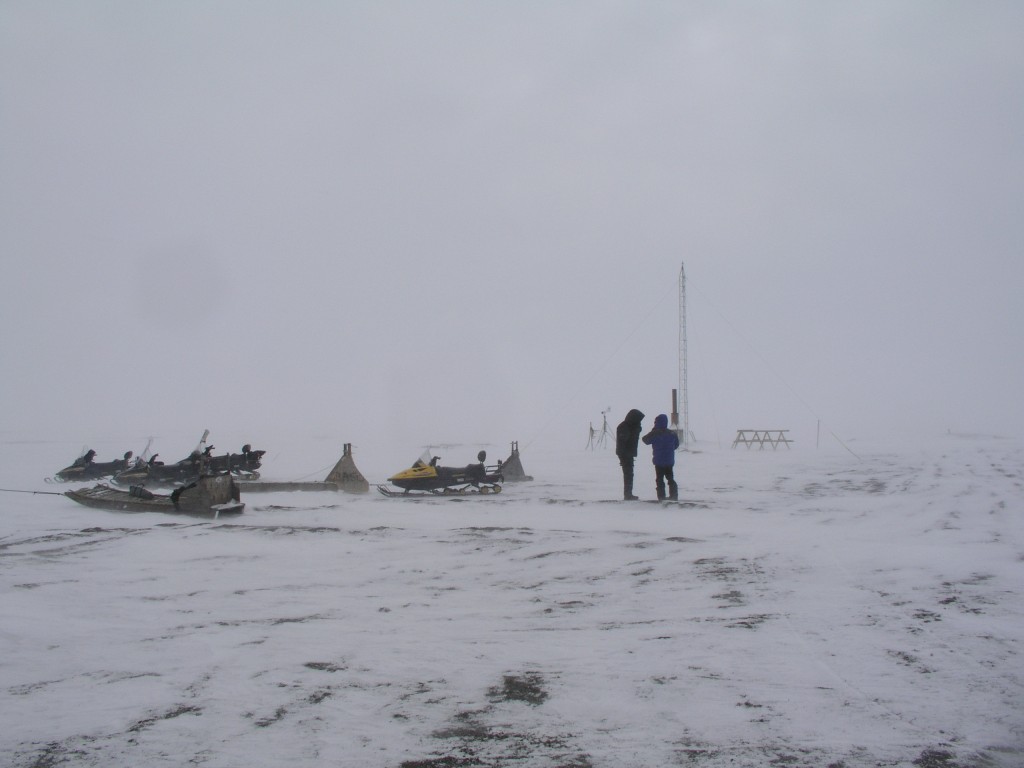
At Point Barrow, the northernmost point in the USA, a whole village was lost to erosion (Pic: I.Quaile)
Sitting in my office on the banks of the river Rhine, I am trying to imagine what would happen if the fast-flowing river was eating into the river bank at an average rate of 19 metres per year. It would not belong before our broadcasting headquarters, the UN campus tower and the multi-story Posttower building collapsed, with devastating consequences.
Fortunately, Bonn is not built on permafrost, so we don’t have that particular concern.
Record erosion on riverbank
The record erosion German scientists have been measuring in Alaska probably hasn’t been making the headlines because it is happening in a very sparsely populated area, where no homes or important structures are endangered.
Nevertheless, it certainly provides plenty of food for thought, says permafrost scientist Jens Strauss from the Potsdam-based research unit of the Alfred Wegener Institute for Polar and Marine Research (AWI). He and an international team have measured riverbank, erosion rates which exceed all previous records along the Itkillik River in northern Alaska. In a study published in the journal Geomorphology, the researchers report that the river is eating into the bank at 19 metres per year in a stretch of land where the ground contains a particularly large quantity of ice.
“These results demonstrate that permafrost thawing is not exclusively a slow process, but that its consequences can be felt immediately”, says Strauss.
With colleagues from the USA, Canada and Russia, he investigated the river at a point where it cuts through a plateau, where the sub-surface consists to 80 percent of pure ice and to 20 percent of frozen sediment. In the past, the ground ice, which is between 13,000 and 50,000 years old, stabilized the riverbank zone. The scientists, who have been observing the location for several years, demonstrated that the stabilization mechanisms fail if two factors coincide. That happens when the river carries flowing water over an extended period, and where the riverbank consists of steep cliff, which has a front facing south, and is thus exposed to a lot of direct sunlight.
Minus 12C average no safeguard
The warmer water thaws the permafrost and transports the falling material away, and in spite of a mean annual temperature of minus twelve degrees Celsius, summer sunlight makes it warm enough to send lumps of ice and mud flowing down the slope, according to Michail Kanevskixy from the University of Alaska Fairbanks, lead author of the study.
Overall, between 2007 and 2011, the cliff – which is 700 metres long and 35 metres high – retreated up to 100 metres, resulting in the loss of 31,000 square metres of land area. That is a large area, around 4.3 football fields, the scientists calculate.
In August 2007, they also witnessed how fissures formed within a few days, up to 100 metres long and 13 metres deep.
“Such failures follow a defined pattern”, says Jens Strauss. “First, the river begins to thaw the cliff and scours an overhang at the base. From here, fissures form in the soil following the large ice columns. The block then disconnects from the cliff, piece by piece, and collapses”.
Infrastructure under threat
Although these spectacular events happened far from populated areas and infrastructure, the magnitude of the erosion gives cause for much concern, given the rate at which temperatures are increasing in the Arctic. The scientists want their information to be used in the planning of new settlements, power routes and transport links. They also stress that the erosion impairs water quality on the rivers, which are often used for drinking water.
But what about those areas of the High North where there are settlements and key infrastructure? Russia is starting to get very worried about the effects of increasing permafrost erosion.
Last month the country’s Minister of Natural Resources, Sergey Donsjkoy, expressed grave concern. The Independent Barents Observer quoted the Minister as saying, in an interview with RIA Novosti, he feared the thawing permafrost would undermine the stability of Arctic infrastructure and increase the likelihood of dangerous phenomena like sinkholes. Russia has important oil and gas installations in Arctic regions. Clearly, any damage would have considerable economic implications. There are also whole cities built on permafrost in the Russian north.
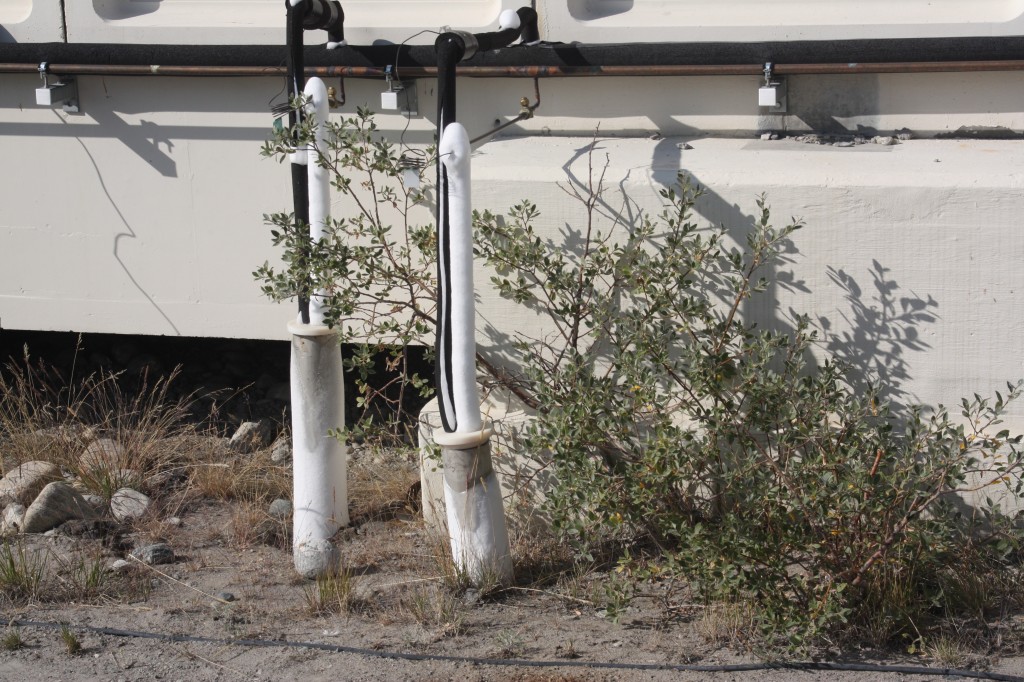
System to cool the foundations of a building on permafrost in Kangerlussuaq, Greenland (pic: I.Quaile)
High time to adapt
In 2014, I interviewed Hugues Lantuit, a coastal permafrost geomorphologist with the Alfred Wegener Institute for Polar and Marine Research, about an integrated database on permafrost temperature being set up as an EU project. He told me it would be very hard to halt this permafrost thaw, and stressed that permafrost underlies 44 percent of the land part of the northern hemisphere.
“The air temperature is warming in the Arctic, and we need to build and adapt infrastructure to these changing conditions. It’s very hard, because permafrost is frozen ground. It contains ice, and sometimes this ice is not distributed evenly under the surface. It’s very hard to predict where it’s going to be, and thus where the impact will be as the permafrost warms and thaws”.
I remember being shocked to see that people in Greenland were having to use refrigeration to keep the foundations of their buildings on permafrost stable. The scale of the problem is clearly much greater in cities like Yakutsk.
Then, of course comes the feedback problem, when thawing permafrost releases the organic carbon stored within it. Let me give the last word to Hugues Lantuit:
“This is a major issue, because it contains a lot of what we call organic carbon, and that is stored in the upper part of permafrost. And if that warms, the carbon is made available to microorganisms that convert it back to carbon dioxide and methane. And we estimate right now that there is twice as much organic carbon in permafrost as there is in the atmosphere. So you can see the scale of the potential impact of warming in the Arctic.”
Anthropocene: No ice age – more blizzards?
If you are sitting somewhere on the East Coast of the USA, struggling to cope with 30 inches of snow, you might be forgiven for reacting with relief to a report released by the Potsdam Institute for Climate Impact Research (PIK) indicating human-made climate change is suppressing the next ice age. With a wink in your eye, you might be very grateful that these extreme conditions are only going to last for a few days and not become the everyday normality of a new ice age.
There are those (but increasingly few of them) who might even thank the fossil fuels industries for averting a scenario like “The Day after Tomorrow” and ensuring that the relatively comfortable interglacial in which we live is likely to continue for the next 100,000 years. That is the conclusion of the study published in the scientific journal Nature.
The problem is that postponing an ice-age illustrates that human interference with natural climate cycles over a relatively short time has the potential to change the world for a hundred thousand years to come, with all the problems that come with it. And given that the increase in extreme weather events like the US snowstorm is highly probably related to anthropogenic climate change, perhaps an ice age in 50,000 years would be the lesser evil.
Burn fossil fuels, suppress the ice age
Using complex models to try to find out which factors influenced the last eight glacial cycles in earth history and what is likely to lie ahead of us, the scientists found that as well as astronomical factors like the earth’s position in relation to the sun in different stages of its orbit, the CO2 concentration in the atmosphere is a key factor.
I talked to physicist and earth systems modeler Andrey Ganopolski, lead author of the study to find out more about the research and the background.
According to Milankovich’s theory, a new ice age should occur when the earth is far away from the sun and summer is colder than usual in the northern hemisphere, at high latitudes in Canada and northern Europe. These are the areas where big ice sheets can grow. At the moment, Ganopolski explained, we have a situation where our summer occurs when the earth is far from the sun. So in principle, we have the conditions when a new ice age can potentially start. He and his colleagues wanted to understand why we are not living in an ice age when astronomically, the conditions are just right to move towards a new ice age.
Meddling with the planet
They come to the conclusion that naturally, without any anthropogenic influence, we would expect the new ice age to start around 50,000 years from now. That would mean that this interglacial, the Holocene, in which we live now, would already be unusually long. In the past, an interglacial lasted only 10 or 20,000 years, but this one is expected to last for 60,000 years.
But our emissions of greenhouse gases are postponing this even further. Relatively large anthropogenic greenhouse gas emissions – say two to three times what we already emitted – would, according to the scientists’ model, additionally postpone the next ice age, so that it would only start 100, 000 years from now, so we would completely skip one glacial cycle, which never happened in the last three million years.
Humankind as a geological force
Now regardless of whether you are a fan of ice and snow or one of those who say they can happily live without any more ice ages, the study’s findings illustrate just how long anthropogenic influence on climate will continue. Humanity, it seems, has become a geological force that is able to suppress the beginning of the next ice age, according to the PIK experts. Human behavior is changing the natural cycles that have shaped the global environment and human evolution.
Over the last 3 million years, glacial cycles were more or less regular. Most of the evolution of humans occurred during those last three million years. Ganopolski says humans can be seen as a kind of product of glacial cycles, because the conditions were probably right to increase the size of our brain, because we had to be clever to survive in such a variable climate.
Who cares?
But given that it is easier and pleasanter to live in non ice-age conditions, there is still an understandable tendency to respond to the ice-age-postponement announcement with: “so what?”
Ganopolski argues one reason the study is significant is that it does away with the arguments of some climate skeptics who have argued that warming the atmosphere by burning fossil fuels is not a bad thing, because it could avert an “imminent” ice age (a theory first made popular around thirty years ago, he says). Since the research indicates there is none on the horizon for more than 50,000 years anyway, this is nonsense, says Ganopolski.
But the main reason the research findings deserve attention, he says, is that they show we can affect the climate for up to a hundred thousand years. He believes a lot of people think if we stop using fossil fuels tomorrow or the day after, everything will be fine. In fact, anthropogenic carbon dioxide will stay in the atmosphere for an extremely long time. “That means we are affecting earth’s future on a geological time scale”, he says.
Whether the next ice age comes in 50,000 or 100,000 years may seem irrelevant to a lot of people, faced with the concerns of life today. But the effects of our warming the globe are already being felt and will have considerable implications well before that, Ganopolski reminds us. He says the new study just shows how massive our interference with the earth’s systems is, and backs up the need to take action now to cut greenhouse gas emissions.
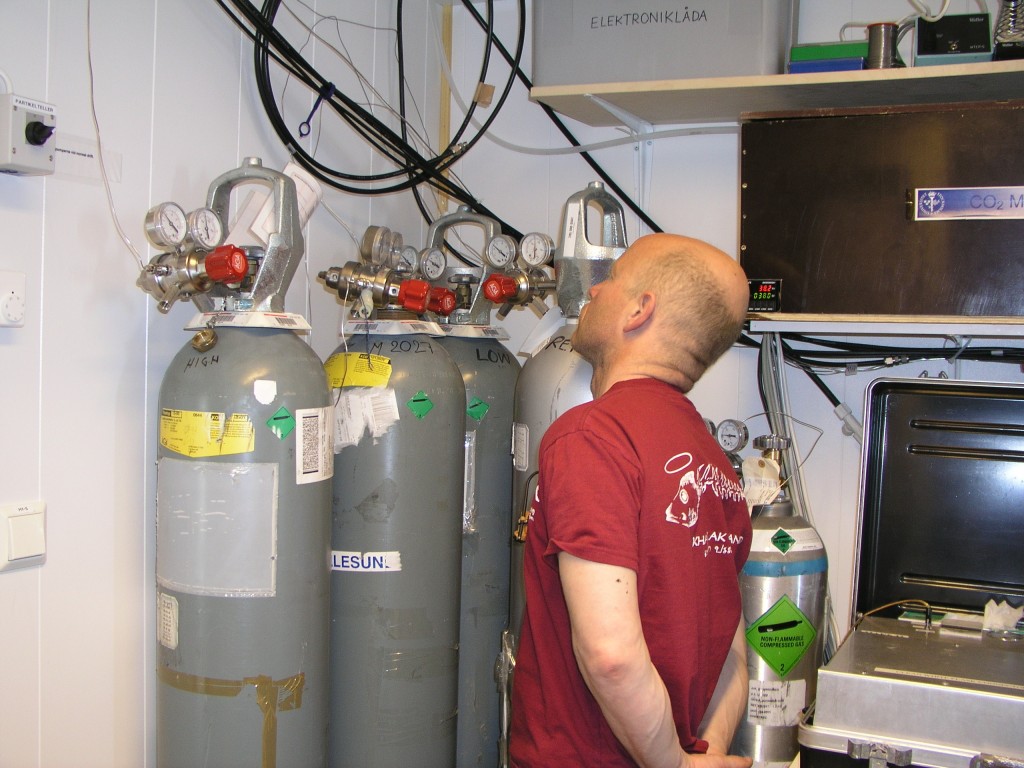
Rising CO2 emissions are influencing glacial patterns (Measuring station on Svalbard, Pic. I. Quaile)
Greenland and Antarctic in the Anthropocene
He mentions the research also deals with Greenland and Antarctica:
“What we show is that even with the CO2 concentration we have already, we can expect that a substantial fraction of these ice sheets will melt. So obviously, in this respect, any further increase of CO2 will have even more negative effects”.
Sea level rise, ocean acidification, changing food supplies, floods, droughts…and, yes, even more of those extreme blizzards, fuelled, paradoxically, by warming seas…maybe there is more to this delaying the ice age business than first seemed.
So are we living in the “Anthropocene”, i.e. an era in which not nature but humankind is determining the shape of the world we live in now and for centuries to come? Ganopolski and his colleagues say yes. He stresses what we are doing to the climate and the speed at which it is happening represent unprecedented, substantial deviation from the natural course of things.
“So if you continue to emit a substantial amount of carbon dioxide, the Anthropocene will last for hundreds of thousands of years, before systems return to anything like “normal” conditions”, he says.
Another study published in Nature today provides further evidence that human intervention is responsible for the annual heat records that have been in the news so often recently they run the risk of losing their news value. Ganopolski’s PIK colleague Stefan Rahmstorf, one of the authors, says the heat records, with 13 of the last 15 years the warmest since records began, can no longer be explained by natural climate variation. But they can be explained by human-induced climate change.
But is there any point in making potentially uncomfortable changes to the way we live today if we have already changed the atmosphere so massively, for such a long time to come? Ganopolski stresses the extent and speed of the changes and impacts are no grounds for resignation:
“There is no justification for making the climate even warmer than it is. It is a matter of how much CO2 we will emit into the atmosphere. Basically, it will affect all generations, and if we care about them, we should stop using fossil fuel as soon as possible.”
Sounds sensible to me.
Tromso filmfest inspires US Arctic envoy
Tromso prides itself on being the “capital of the north”. As well as the Arctic Frontiers conference, which is happening this week, TIFF, the Tromso International Film Festival has been running here. There is an amazing amount of culture for a place which seems so far from the city life of Oslo, the Norwegian capital. With a huge variety of films showing around the town, including the Oscar possible “Birdman”, the town was buzzing at the weekend.
I was fascinated to find these kids in their snowsuits settled in the city centre, waiting for a showing of Disney’s Frozen. As it turns out, I wasn’t the only one. At Arctic Frontiers today, the US Special Representative (ex Admiral) Robert Papp, told the story of how he and the Chair of the US Arctic Research Commission, Fran Ulmer, had shared a taxi into town from the airport and come across that same little outdoor film show.
He talked about his granddaughters and their fascination for the Disney figures, and whether Disney couldn’t be a good way to educate American children about the Arctic. The story goes that he suggested this to a leading figure in the movie company. Why not replace films showing a fantasy vision of the Arctic by movies about the plight of polar bears, villages in danger of collapsing through coastal erosion and other such stories. The Disney rep was apparently very put out. “We have to project optimism and have happy endings”, he reportedly told the Admiral.
Papp says he still feels optimistic, as he presented the programme for the upcoming US Chairmanship of the Arctic Council, a programme he says is rightly described as “ambitious”. The theme is “One Arctic. Shared opportunities, challenges and responsibilities”. With the impacts of the dispute between the west and Ukraine on the agenda this afternoon, it sounds like a good approach to Arctic governance.
Arctic Oil – a white elephant?
The conference: Arctic Frontiers has attracted a record number of participants this year and huge media interest. For the first time in addition to a political and a science section, there is also a business section. It will focus on oil, gas and minerals. Clearly, once more, the Arctic is a “hot topic”.
The conference opened with an exceptionally good panel discussion tonight. The conference title is “Climate and Energy”, and it is hardly surprising that there is a lively debate on that here. Norway is, after all, an oil nation, but at the same time a country well known for innovation and wise financial management. And then, of course, comes the urgency of the climate conundrum…
Here in Tromso, Norway’s “Arctic capital”, the question of Arctic oil obviously plays a key role. The representative of the region Line Miriam Sandberg, County administrator for business, culture and health, and the panel chair Olav Orheim, (GRID Arendal, a centre that works with UNEP) made it quite clear that a lot of people here are in favour of Arctic development, including oil and gas exploration, in the interests of jobs and economic benefits.
The representative of the oil industry Kjell Giæver, Director of Petroarctic found himself a bit out on a limb, though. Apart from the Tromso representative, there was no real support for or confidence in Arctic oil development amongst the panelists. Guest of honour HSH Prince Albert II of Monaco, who is quite committed to Arctic protection and has a tradition of Arctic exploration in his family, stressed the need to protect against any dangers to the fragile environment.
The Chair of the US Arctic Research Commission Fran Ulmer called for a carbon tax and measures to protect the climate and reduce fossil fuel consumption. Although she stressed this was her personal opinion and she could not speak for ANY government (!), she is obviously in a very influential position, and anything she says on this has to be taken seriously.
It will come as no surprise that Nina Jensen, CEO of WWF Norway, is against oil exploration in the Arctic. I can remember her here at previous conferences having a much more difficult time, with plenty of opposition from other speakers. This time, my impression was that she was definitely not in a minority.
Probably the most noteworthy stance – certainly the one that impressed me most – was taken by Jens Ulltveit-Moe, the CEO of Umoe, one of the largest, privately owned companies in Norway, active amongst other things in shipping and energy. Here we had an industry representative, who said quite clearly that with the current low oil price Arctic oil was simply not viable, and this would remain the case for many years to come. (The oil industry rep as you can imagine disagreed). And by then, he said, the EU’s climate targets and the international support for a two-degree target would make fossil fuels a non-option. The future lies in renewables, he says, and Arctic oil investment will probably be a white elephant. (His group is involved in bioenergy), Now there is food for thought at the start of this high-profile gathering, which will see high-ranking government representatives from the Arctic nations, but also China and others, discuss “climate and energy”. If the opening debate is anything to go by, the next two days will be very lively.



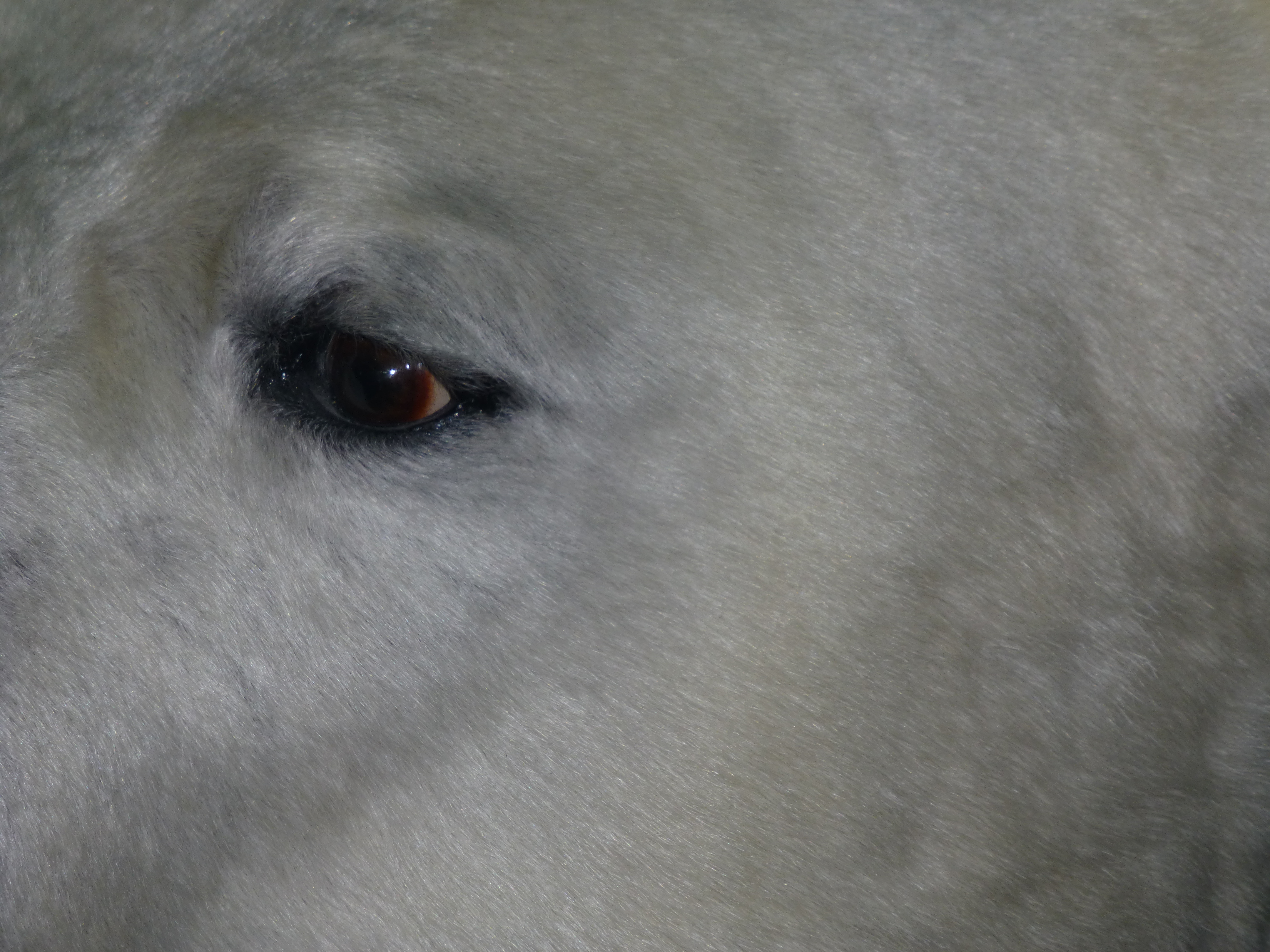
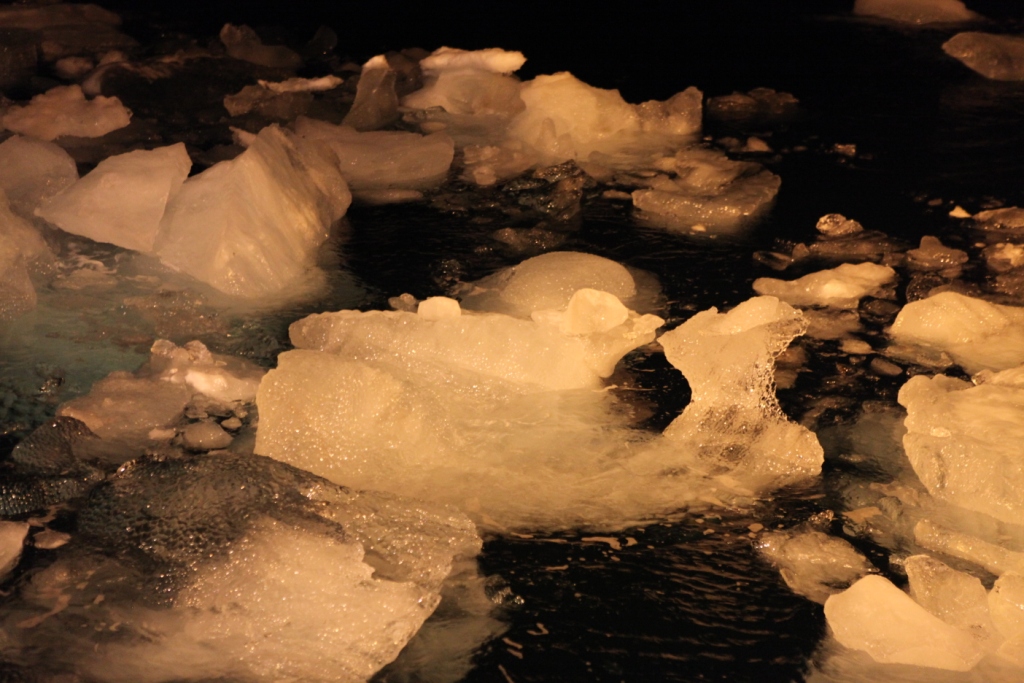

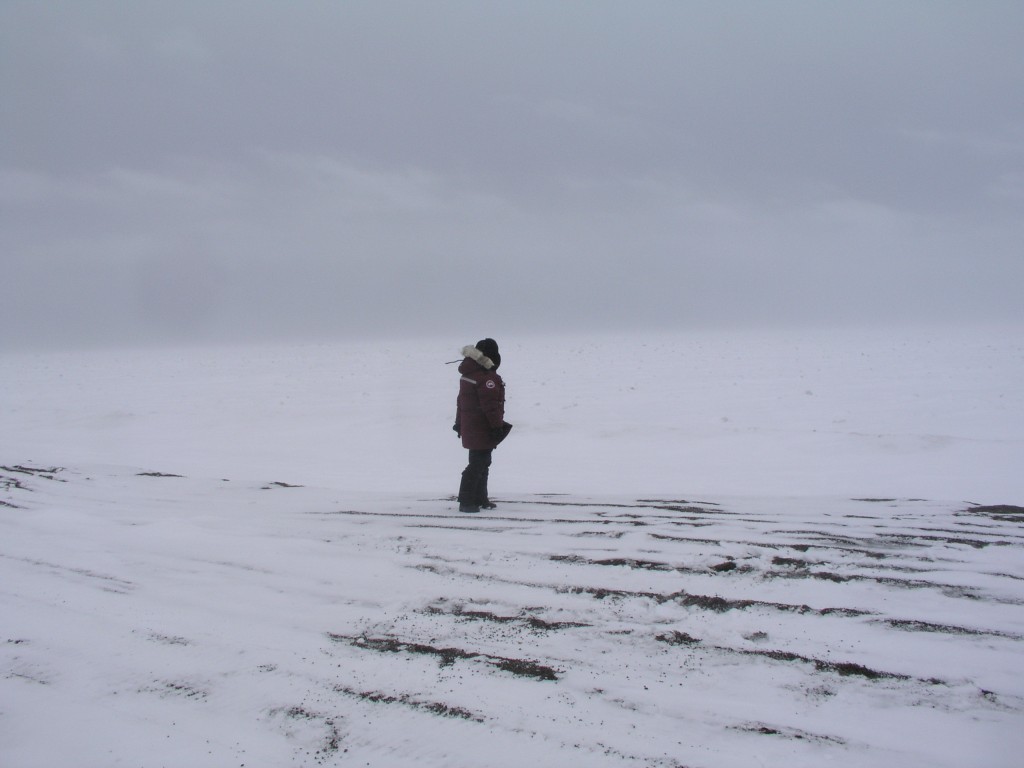
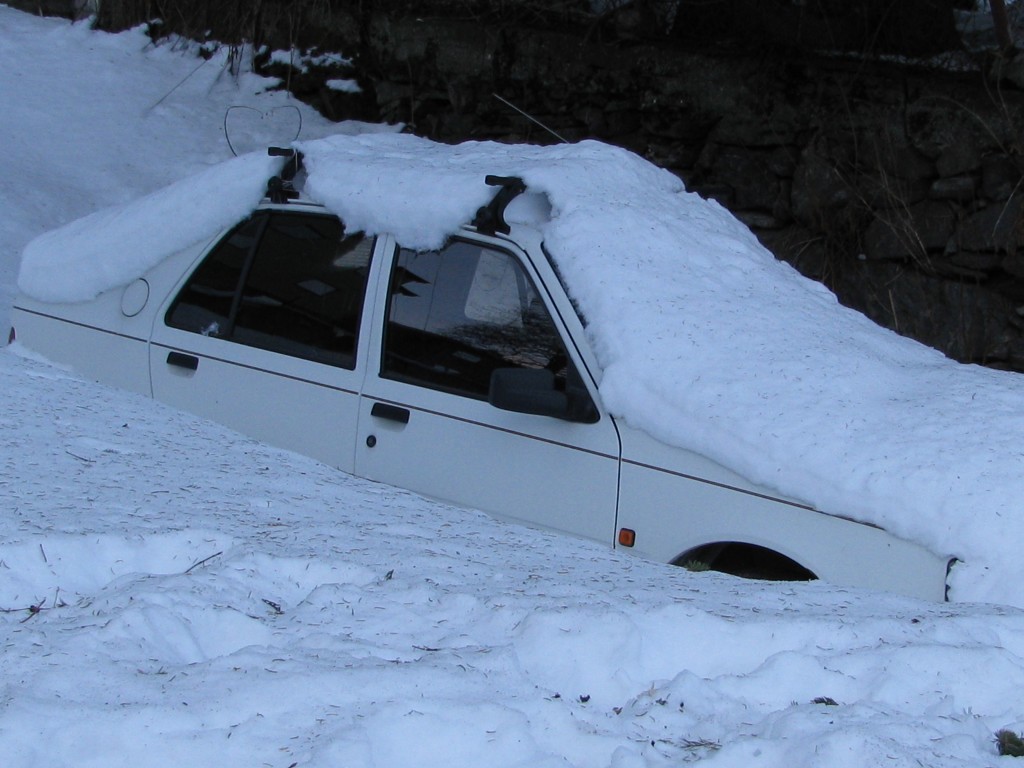
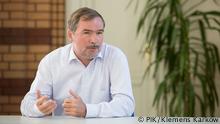
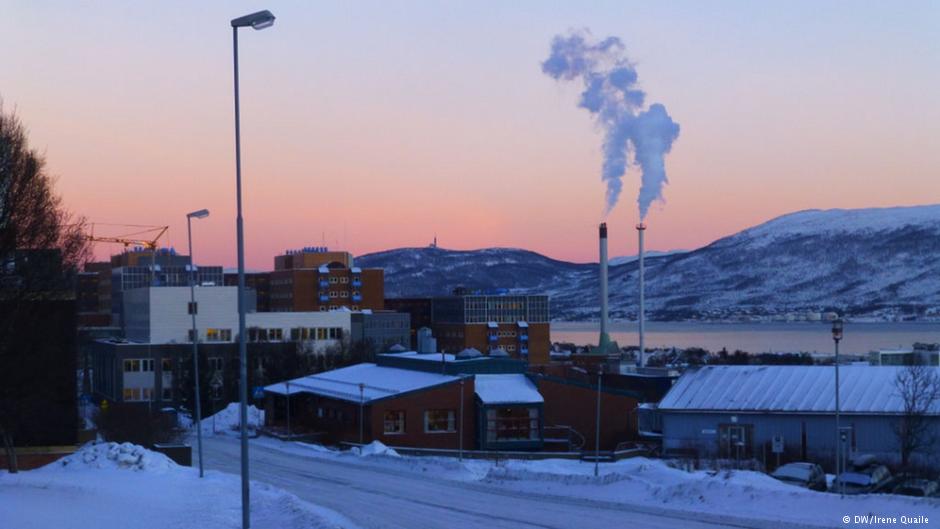
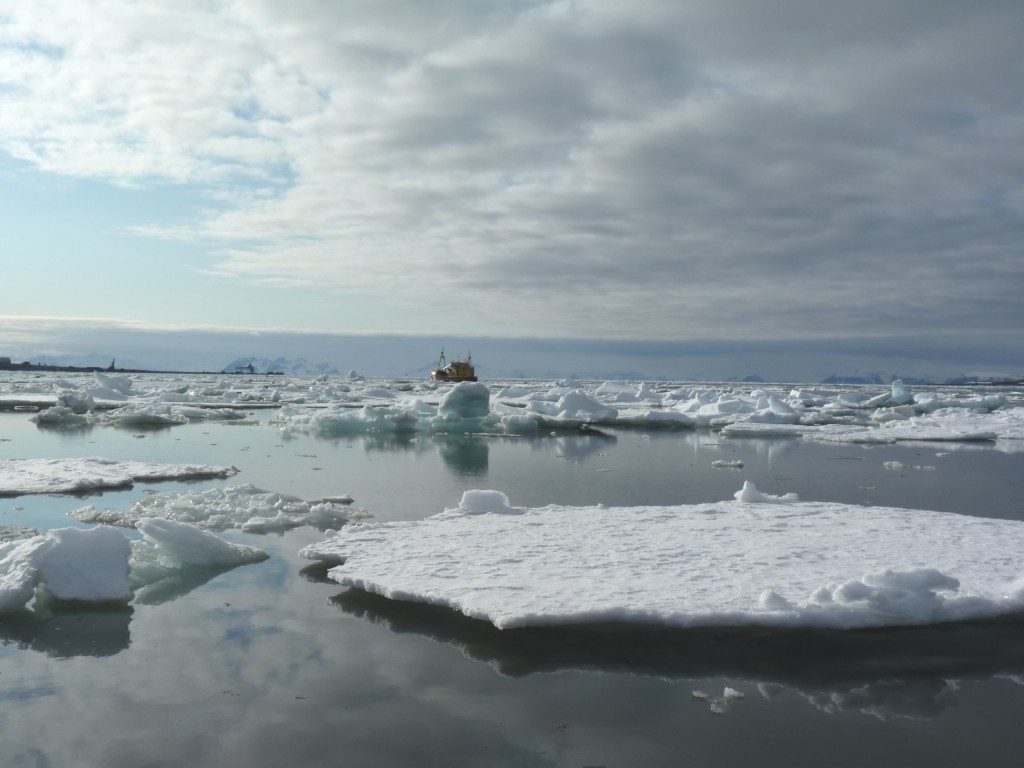
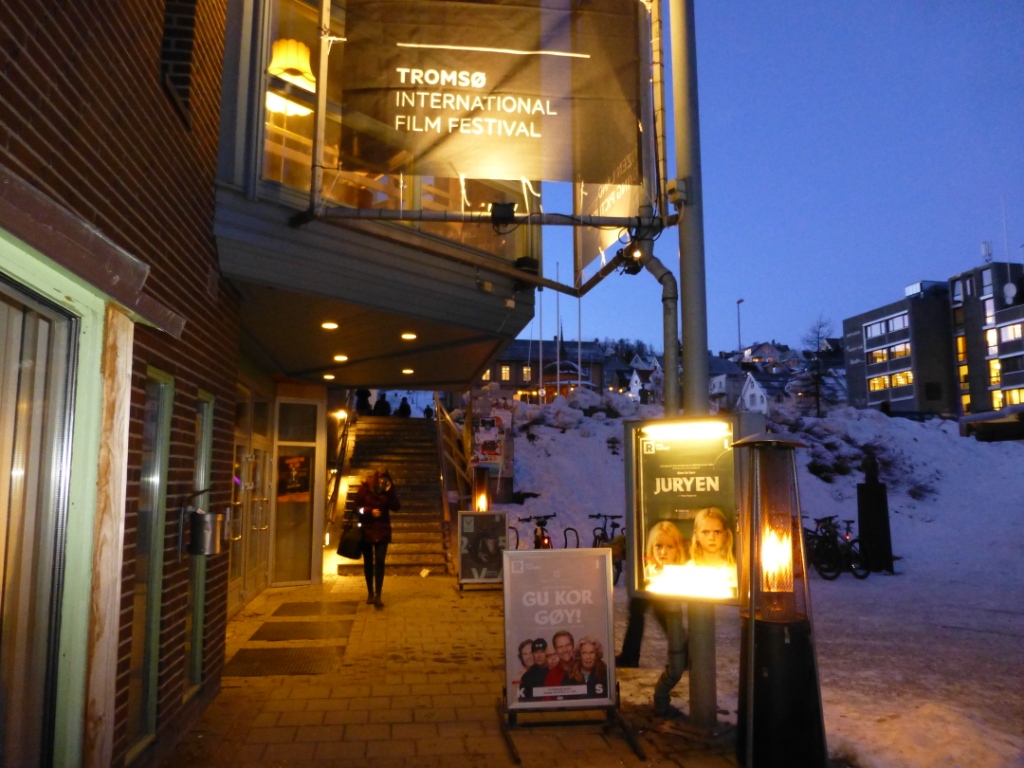
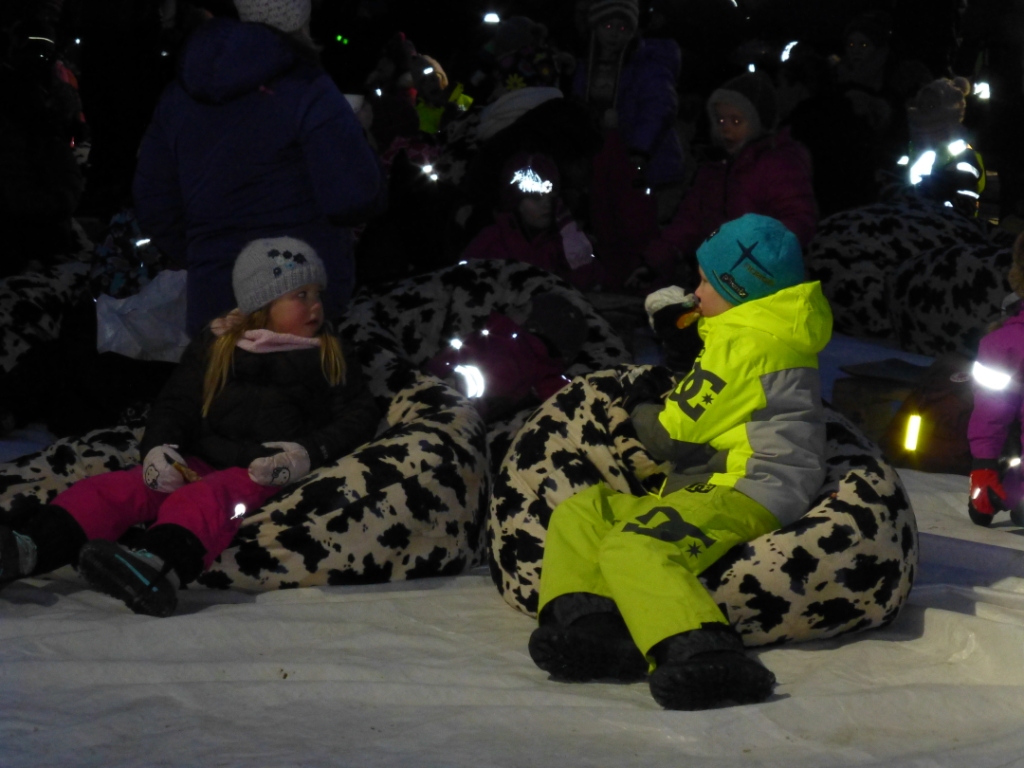
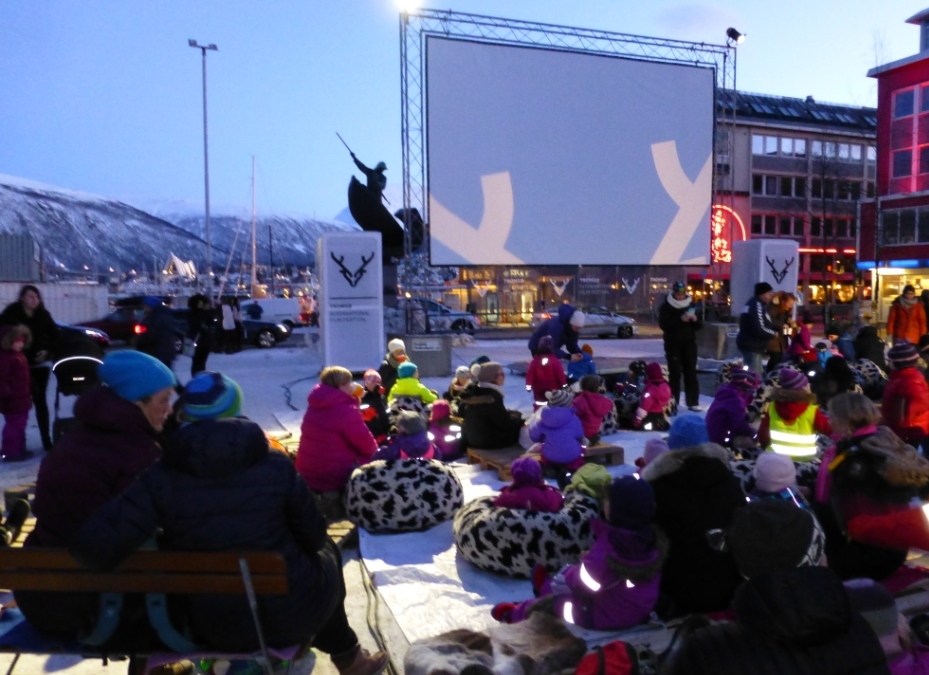
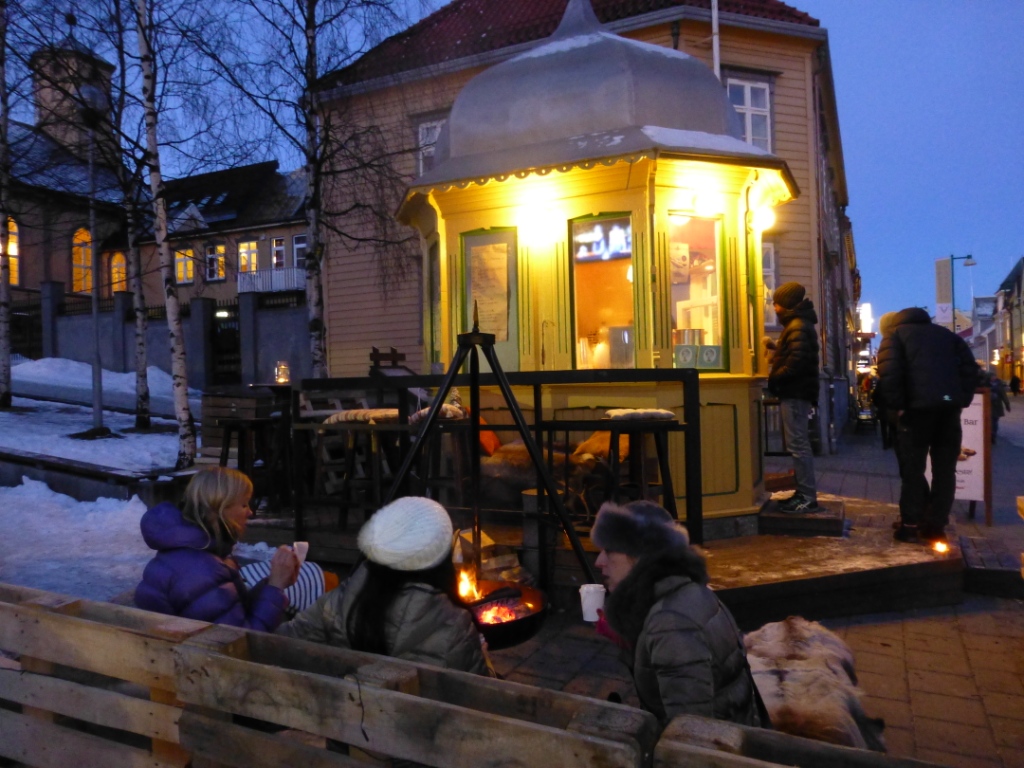
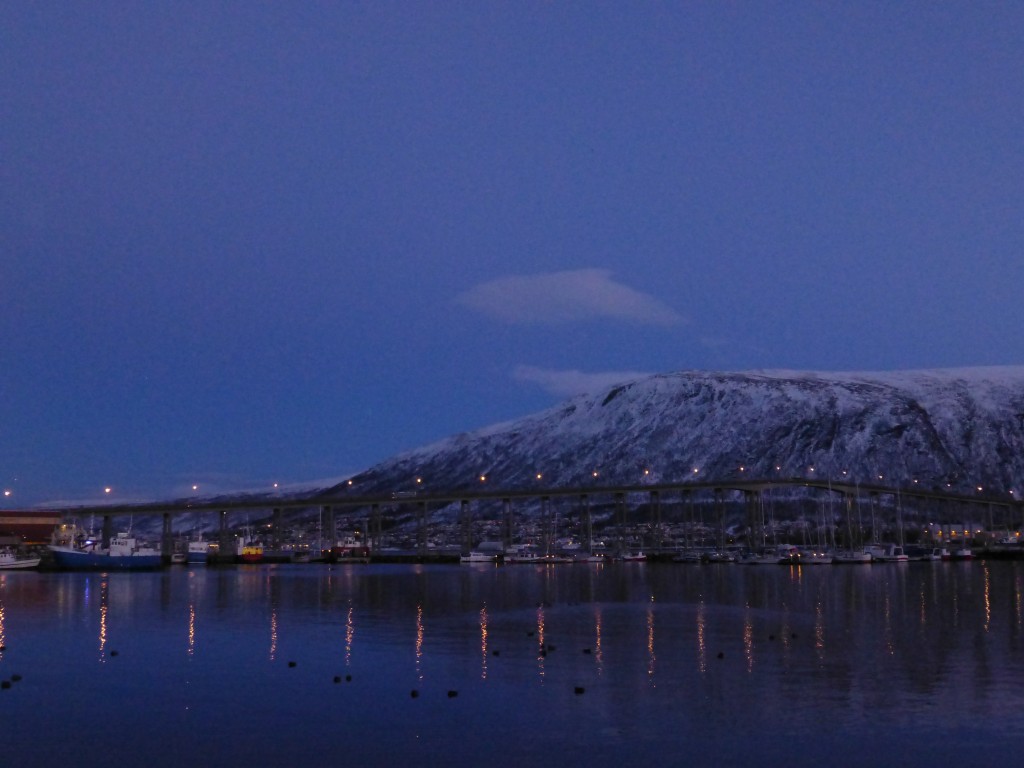
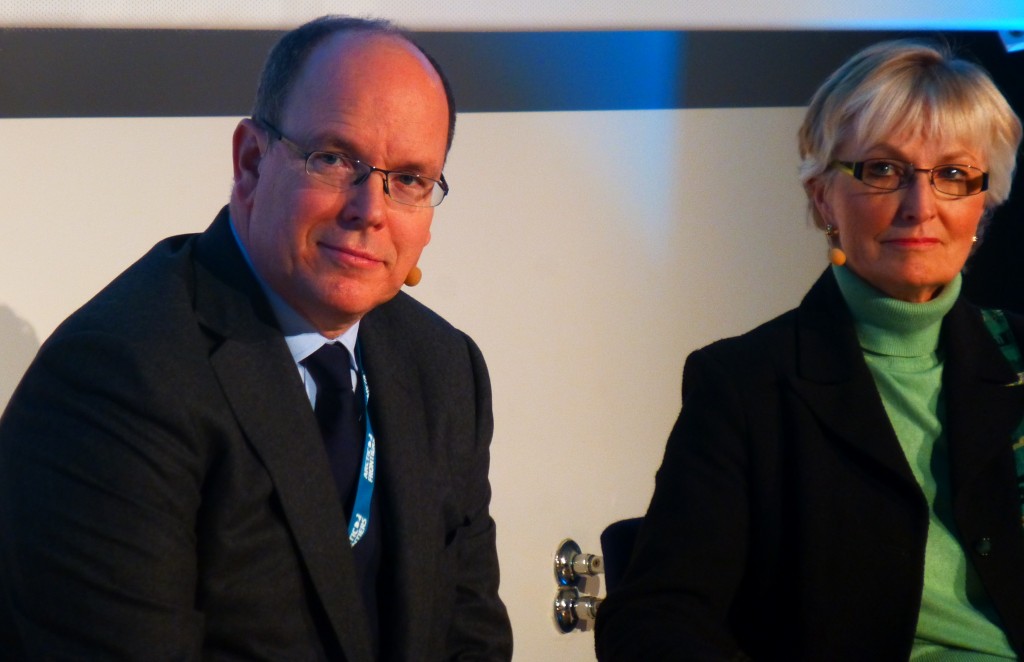
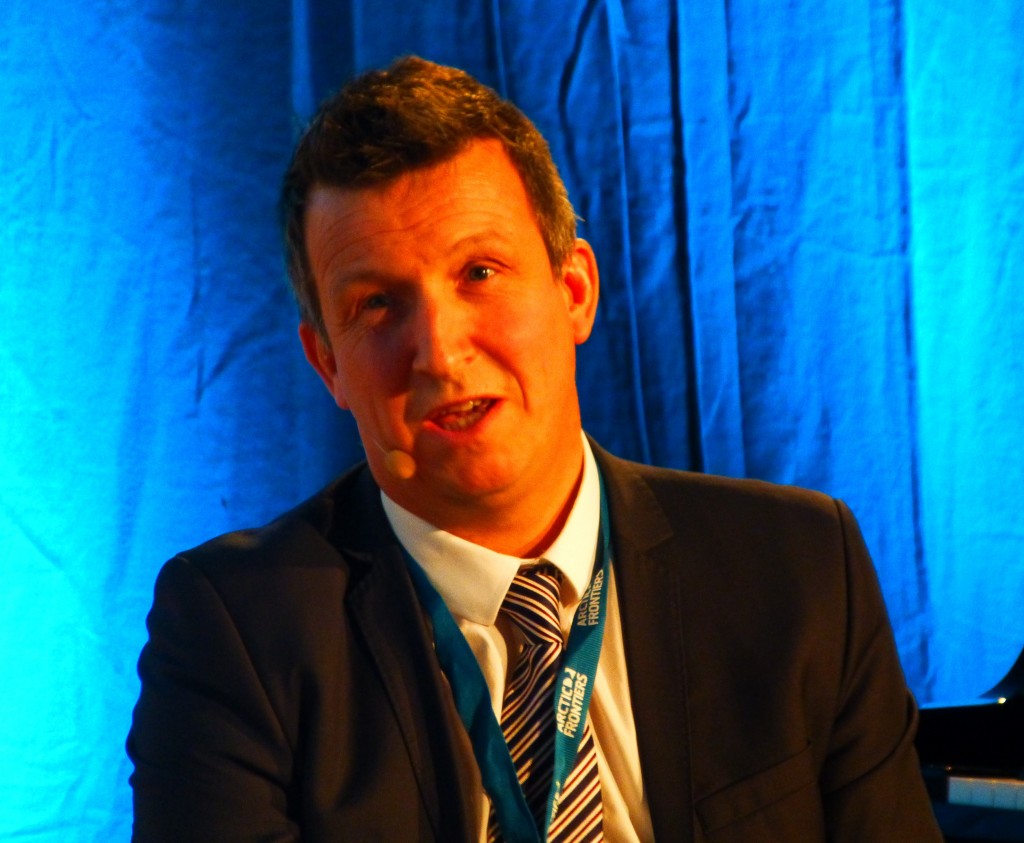
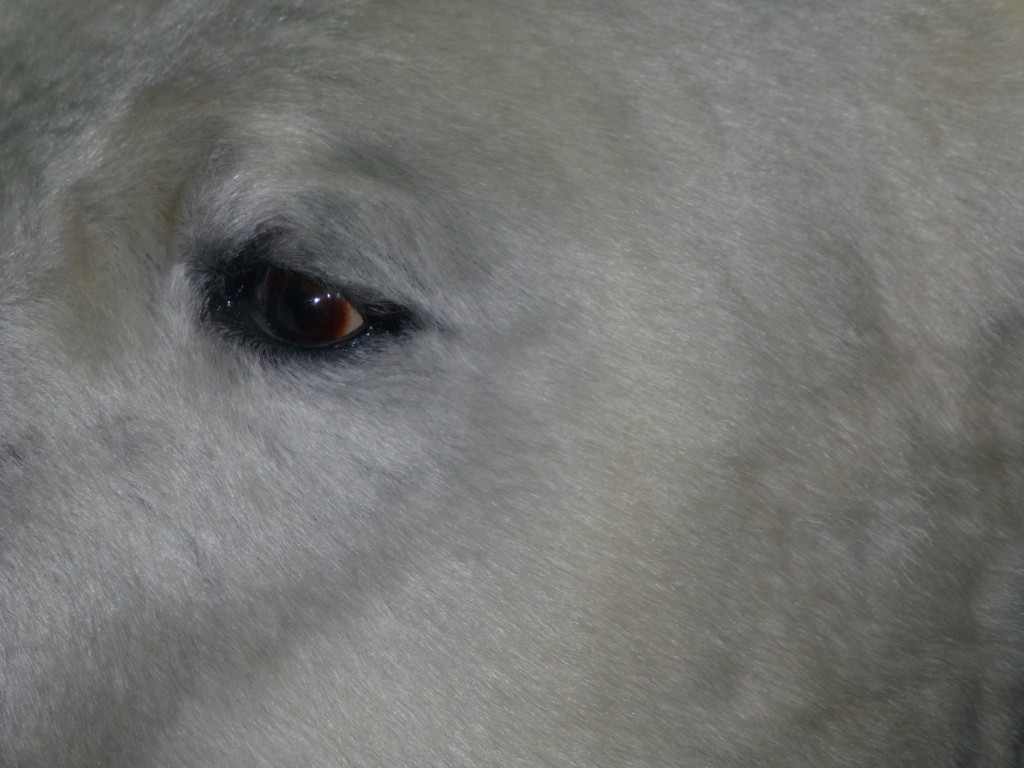
















Feedback